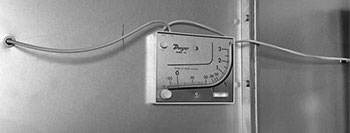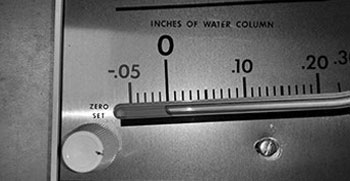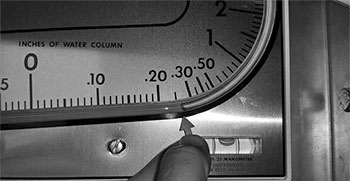How can a manometer tell me when to change my paint booth filters?
You don't want to switch out your paint booth filters prematurely and waste money. But if you wait too long to switch them out, you could damage your booth by putting excessive strain on your fan and motor and you also put your safety at risk if solvents aren't properly being exhausted.
One solution is to utilize a simple, inexpensive manometer. A manometer measures air pressure differences inside and outside of the paint booth. This can tell you how well air is flowing in the booth. What you want is a constant air flow to ensure high quality paint jobs. It depends on how frequently the paint booth is in use, but in time the filters will start to get clogged up.
How do I set up my manometer?

Attach the manometer to a paint booth wall close to the exhaust filter bank. Connect tubing from where air enters the filter bank and also where air exits the filter bank. Make sure that the manometer is level.
How do I get a baseline reading on my manometer?
Fill in the manometer with the provided red fluid until it reads zero on the scale. Be careful not to overfill. You can make slight adjustments to zero out the gauge using the zero set knob.


Make sure that the paint booth is turned off. Put new filters in place. Close the paint booth door and turn on the fan. The fluid in the manometer will jump around a bit before settling at a level. Use a pen to identify this point with a green arrow. For this example, let's assume that this starting level is 0.25 inches of water.

So when do I replace the filters?

Consult your paint booth manual to figure out where your filters will pack out. For the Col-Met paint booths that we offer, that number is 0.5 inches of water. So simply add this 0.5 to the baseline reading of 0.25 in the previous step. Mark this 0.75 in red on your manometer.
Once you've completed the initial baseline process, you won't need to do it again. Just keep an eye on the manometer. When the gauge gets close to your red line, you should switch out those filters.

